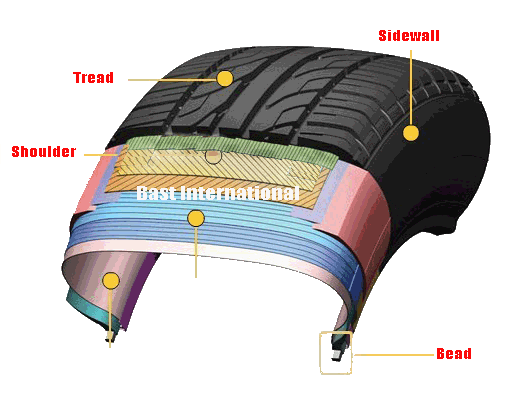Tire Maintenance Knowledge
release time:2018/5/25 14:28:00 Page views:
The function of the tire includes many aspects: dry grip, waterproof slide, provide comfort, reduce driving noise, impact resistance, wetland grip, bearing, handling, average wear, mileage. The evaluation of tire performance is also mainly evaluated from these aspects.
The cross-sectional structure of a tire can be roughly divided into four parts: tread, shoulder, sidewall, and bead. Each part has its own function. The tread is mainly in contact with the ground, the shoulders and the sidewall play a supporting role, and the bead is in contact with the rim to play a sealing role.

Tires are not just a mass of rubber. The interior of the tire is actually made up of several layers of different materials - tread pattern, cover layer, steel belts (two layers), stress absorbing rubber strip, carcass casing layer, and inner liner. First of all, let us talk about “steel belt layer”. This layer is formed by stacking two layers of steel wire.The role is to improve the rigidity of the tread so that the tire can cope with impact from uneven road surface.To prevent corrosion of the steel wire, there is a“cover layer” outside the steel belt layer,playing the role as “overcoat”. "Carcass cord layer" frames the entire tire section to provide support for the tire. The inner liner is located inside the tire and extends to the bead position of the tire, mainly serving as a seal.
We often hear about the aspect ratio, and next we explain how each parameter is obtained. The smaller the aspect ratio, the thinner the tire looks. Small aspect ratio tires are the trend, which is due to the need to adapt to the high output torque of new models.

For the average user, we only need to care about the tire size parameters. For example: 235/70R16 104T, 235/70 is the aspect ratio, R is the radial tire, 16 is the rim outer diameter, 104 is the load index, and T is the speed rating. Specific values for the load index and speed rating can be found in the relevant tables.
(The end)
- Previous article: None
- Next article: None
